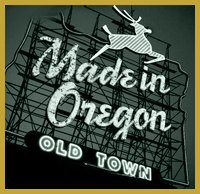A Regional Center is defined as any economic unit, public or private, engaged in the promotion of economic growth, including increased export sales (if applicable), improved regional productivity, job creation, and increased domestic capital investment. The Digital Force plan is to incubate business opportunities while providing the guidance as a “Venture Catalyst”.
.
How does a Regional Center qualify for the Pilot Program?
The basic requirements for Regional Centers wishing to participate in the Pilot Program are as follows:
Focus on a geographic region;
Promote economic growth through increased export sales, if applicable;
Promote improved regional productivity;
Create a minimum of 10 jobs directly or indirectly per investor;
Increase domestic capital investment;
Be promoted and publicized to prospective investors;
Have a positive impact on the regional or national economy through increased household earnings; and
Generate a greater demand for business services, utilities maintenance and repair, and construction jobs both in and around the center.
What should a Regional Center designation proposal include?
The principals of a proposed Regional Center should submit a proposal that:
Clearly describes how the regional center focuses on a geographical region of the United States, and how it will promote economic growth through increased export sales, improved regional productivity, job creation, and increased domestic capital investment;
Provides in verifiable detail how jobs will be created indirectly;
Provides a detailed statement regarding the amount and source of capital which has been committed to the regional center, as well as a description of the promotional efforts taken and planned by the sponsors of the regional center;
Contains a detailed prediction regarding the manner in which the regional center will have a positive impact on the regional or national economy in general as reflected by such factors as increased household earnings, jobs, greater demand for business services, utilities, maintenance and repair, and construction both within and without the regional center; and
Is supported by economically or statistically valid forecasting tools, including but not limited to feasibility studies, analyses of foreign and domestic markets for the goods or services to be exported, and/or indirect job creation multipliers.
|
What are the requirements for an investor in the Pilot Program?
The requirements for an investor in the Pilot Program are essentially the same as in the basic EB-5 investor program except the Pilot Program allows for a less restrictive requirement for “indirect” rather than “direct” job creation. The capital investment requirement for any EB-5 investor, inside or outside a Regional Center, is $1 million or $500,000 for an investment in a Targeted Employment Area or a Rural Area. To apply, any EB-5 investor, inside or outside a Regional Center, submits Form I-526 to USCIS. For the Pilot Program, the investor should demonstrate that his or her qualifying investment is within an approved Regional Center and that the investment will create jobs indirectly beyond the commercial enterprise.
Proposed Industry & Job Sectors
D-Force business and project incubation models will focus upon multi-media and technology. The research, development, design, production, deployment and distribution phases are included in our vertically integrated “Venture Catalyst’ business model which adheres to the successful continuity of macro planning; Concept to Consumer. D-Force is a business and project incubator which will include the stages of business ranging from R&D to the marketplace. Projects in targeted industries include a diversified portfolio of investments in various media and technology sectors which stand alone as feasible business models, but increase in value and effectiveness when supported by strategic alliances. Our Regional Center plans incorporate vertical integration of cross-over support with a variety products and services. Media production is supported by distribution, which is then supported by marketing and fulfillment. R&D is supported by implementation, production and distribution. The slate of projects include but are not limited to; motion pictures, studio facilities, research facilities, digital technology products, multi-media production, distribution, video on demand, web streaming, social media technology, software programming, product fulfillment, marketing, promotion, theatrical distribution; and mixed use projects containing more than one of the above elements. The physical facilities slated for D-Force projects will include production studios, high technology design facilities, educational R&D facilities, digital production facilities and administrative offices.
Business plans slated for incubation and project roll-out include a variety of intellectual property (I.P.) such as software, internet applications, products, web services, short and long format entertainment, product sales, fulfillment and distribution. Project criteria guided by; high job concentration, low ecological-effect impact, high result efficiencies, sustainable operations, green underwriting criteria and mitigated risk economic models.
Current projects engaged in the Digital Force incubation process can be found at ORFilmJobs.com website. |
|

DIGITAL Film Oregon Regional Center
New Market Tax Credits (NMTC)
Portland State University
University of Oregon



|


